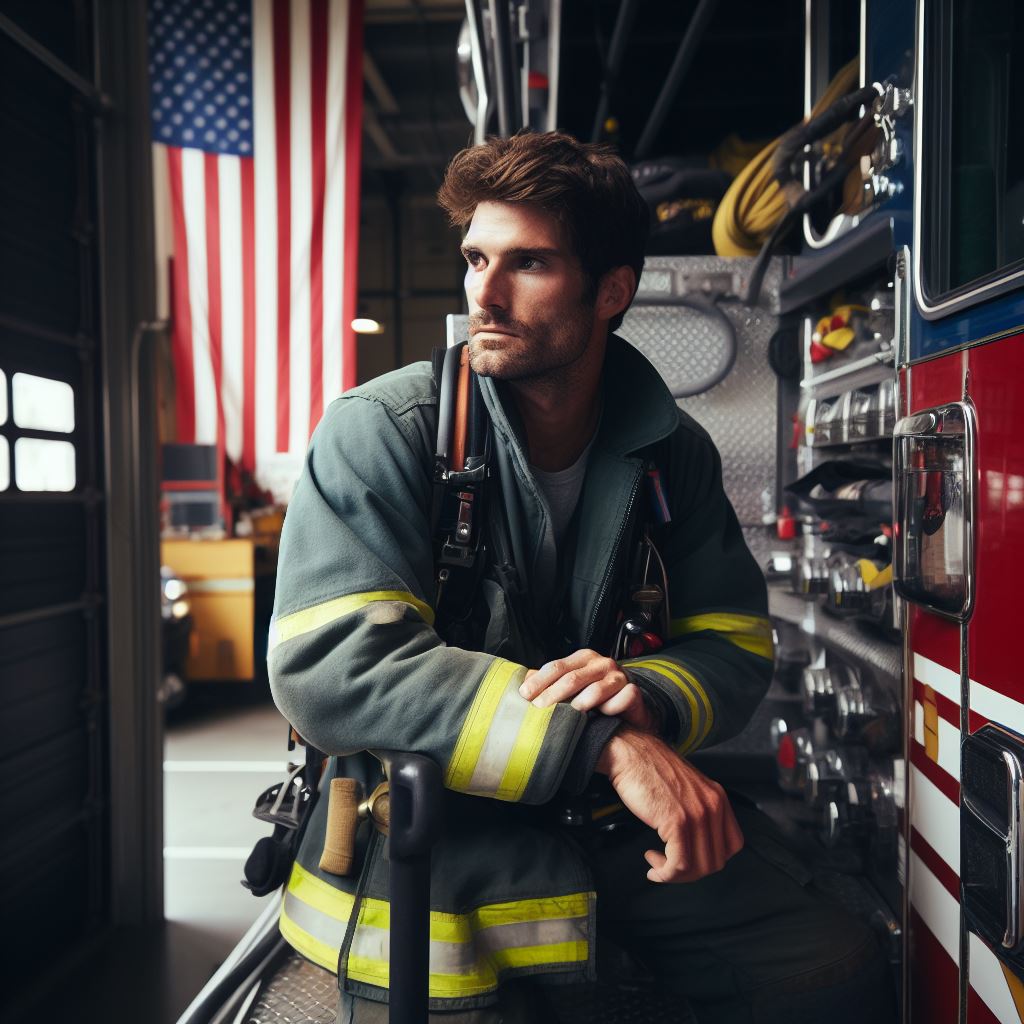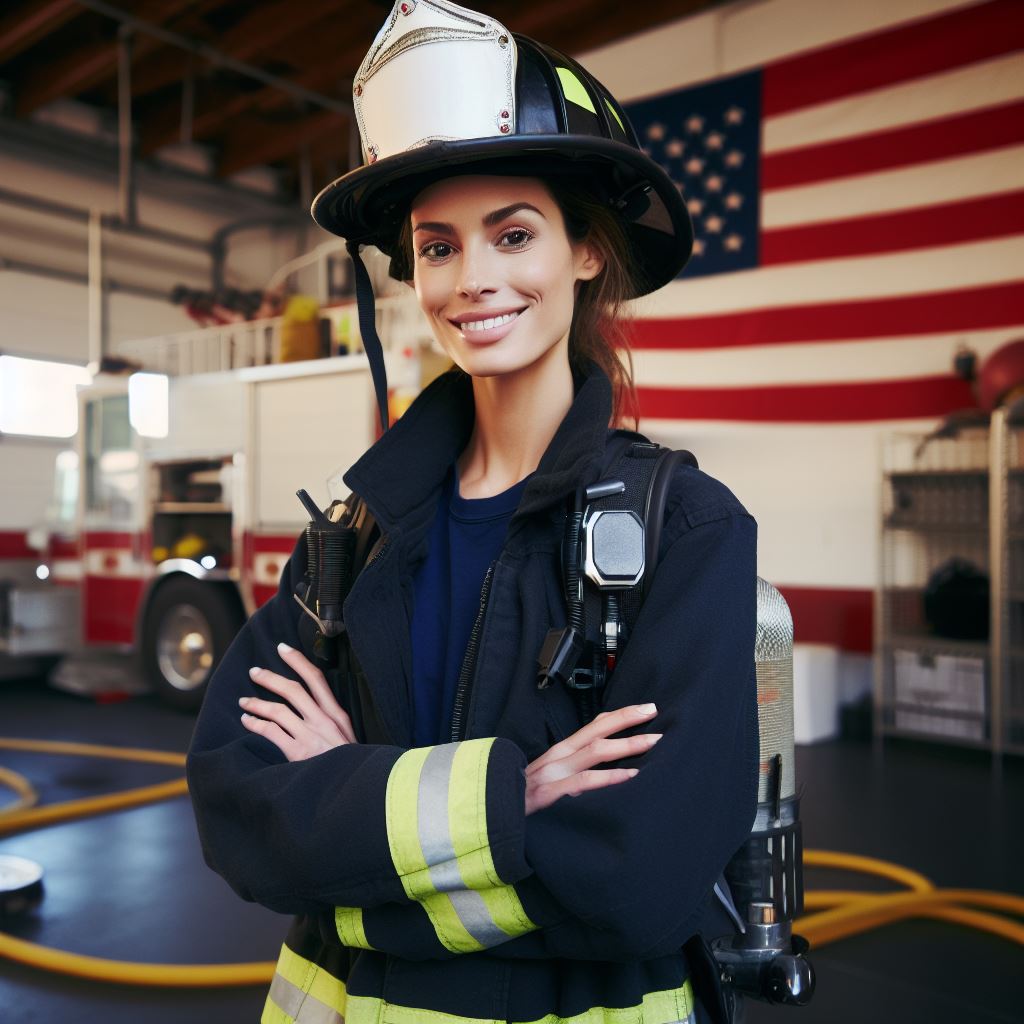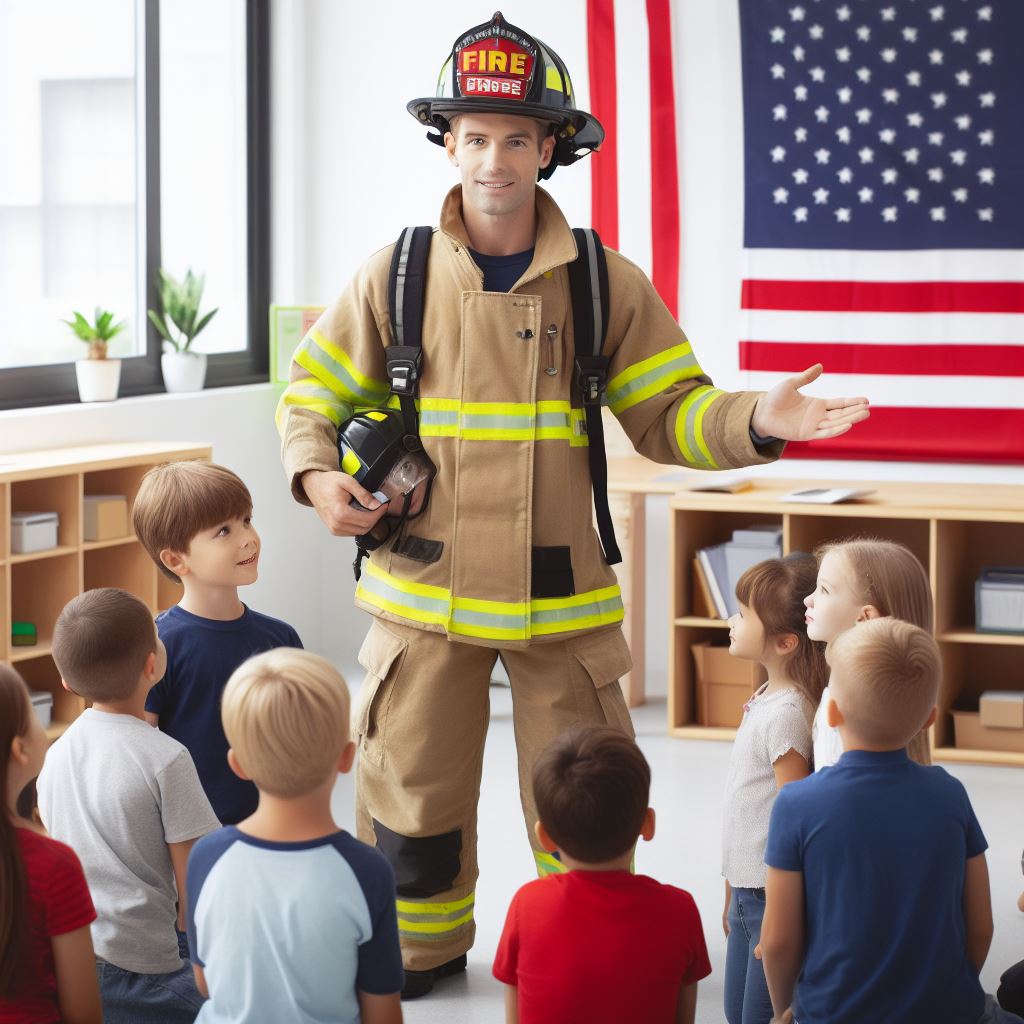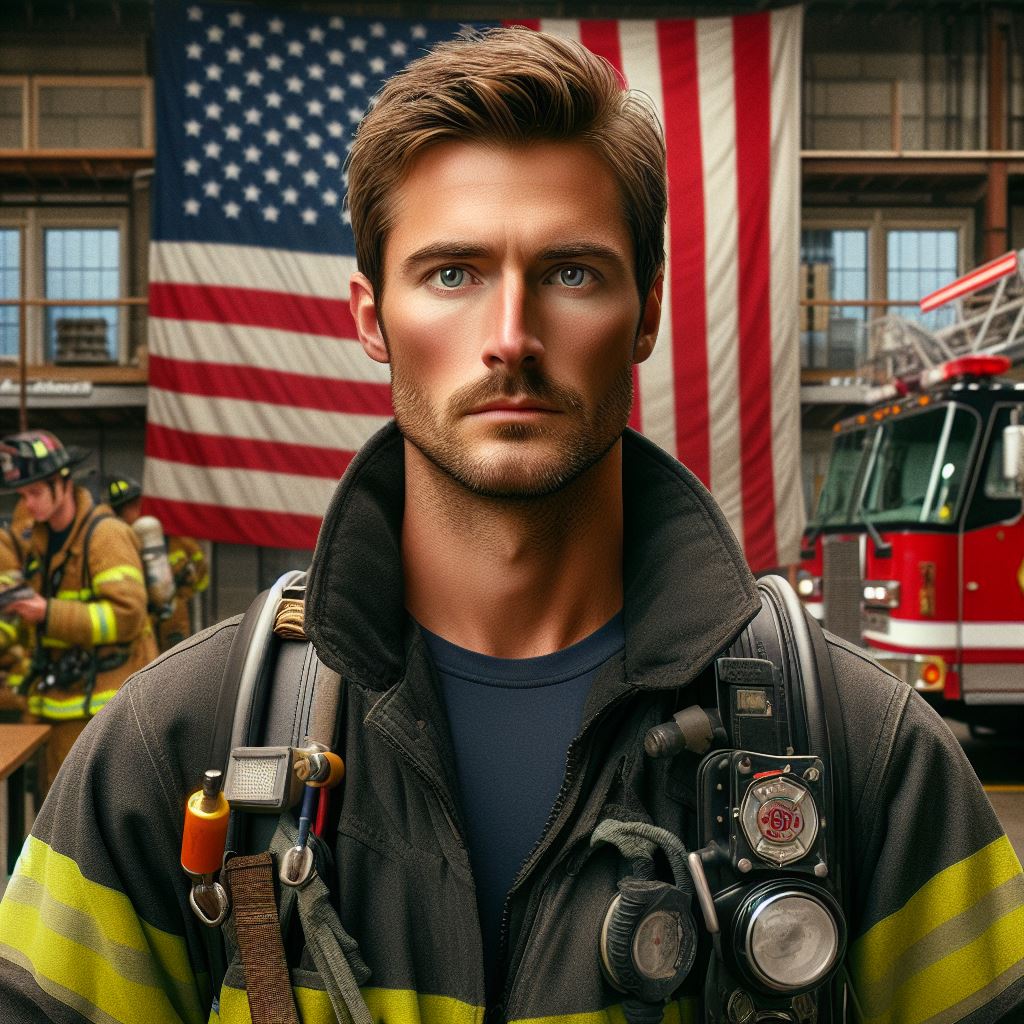Introduction
Unveiling the Wildfire Frontlines: A Day in the Life of a Hotshot
In the relentless dance between fire and the courageous individuals on the frontlines, hotshots emerge as the unsung heroes.
This blog serves as a window into the challenging, yet vital, world of these dedicated professionals who stand firm against nature’s wrath.
Understanding the Role of Hotshots
Hotshots, the elite force in firefighting, navigate the treacherous terrains where wildfires rage at their fiercest.
Their responsibilities go beyond traditional firefighting; they are the first responders, tackling infernos head-on to protect communities and ecosystems alike.
Glimpsing into Daily Life
This blog delves into the intricacies of a hotshot’s daily routine, offering a glimpse into the physical and mental challenges they face.
From dawn to dusk, their commitment to quelling wildfires is unwavering, and their actions form a crucial line of defense against the destructive forces of nature.
Stay tuned for an in-depth exploration of the skills, equipment, and camaraderie that define the life of a hotshot on the wildfire frontlines.”
Background on Hotshots
- Hotshots are highly trained firefighters who specialize in fighting wildfires.
- Their purpose is to respond quickly and efficiently to wildfires, working on the frontlines to suppress and manage the fire.
- Hotshots are often deployed in remote wilderness areas where access by vehicles is limited.
- They are considered elite firefighters and are often at the forefront of fire suppression efforts.
Training and Physical Demands
- Becoming a hotshot requires rigorous training and physical fitness.
- Prospective hotshots undergo extensive training programs to enhance their firefighting skills.
- Training includes courses on fire behavior, safety, navigation, and the use of specialized tools.
- Hotshots are required to pass demanding physical fitness tests to ensure they are prepared for the strenuous nature of the job.
- Physical fitness is crucial as hotshots often work long hours under extreme conditions, carrying heavy gear and hiking over rough terrain.
- Hotshots must have the strength and endurance to withstand the physically demanding work and changing weather conditions.
Day in the Life of a Hotshot
As the sun rises over the rugged landscape, a hotshot crew starts their day, ready to face whatever challenges nature presents.
The crew gathers for a briefing, where they are updated on the fire’s behavior, tactics, and safety protocols. Each firefighter knows their role.
Hotshots don their personal protective equipment, including fire-resistant clothing, helmets, gloves, and boots, before boarding their transport.
Arriving at the fire’s location, hotshots assess the terrain, weather conditions, and the fire’s progression to strategize their suppression efforts.
Using various tools such as chainsaws, hand tools, and drip torches, hotshots create firebreaks, removing vegetation and other fuel sources.
Hotshots work in coordination, communicating and maintaining situational awareness to ensure safety and effective fire management.
The intensity of the fire increases, testing the physical and mental stamina of the hotshots as they battle the flames.
Smoke fills the air as hotshots use their expertise to anticipate the fire’s next moves, proactively adjusting their strategies accordingly.
Throughout the day, hotshots constantly monitor fire behavior, adapting their tactics to contain the fire and minimize its impact.
As the sun sets, hotshots continue their relentless efforts, cautiously working in the diminishing light, still focused on their mission.
Finally, after hours of exhausting work, the crew regroups, reflecting on their achievements and preparing for the next day’s challenges.
Back at their base camp, hotshots unwind, sharing stories and camaraderie, knowing they have made a significant impact on wildfire suppression.
Although the life of a hotshot is demanding and dangerous, their dedication and passion for protecting communities and nature drive them forward.
These brave individuals embody the spirit of teamwork, resilience, and sacrifice in the fight against the destructive force of wildfires.
They are the unsung heroes who work tirelessly on the wildfire frontlines, ensuring the safety of both the environment and those at risk.
The life of a hotshot is not easy, but their vital role in safeguarding our forests and communities is immeasurable.
Transform Your Career Today
Unlock a personalized career strategy that drives real results. Get tailored advice and a roadmap designed just for you.
Start NowSo next time you see a hotshot crew in action, remember the incredible commitment and bravery behind their daily battle against wildfires.
Morning Routine
Early Morning Routine of a Hotshot Team
As the sun rises, the hotshot team members wake up and prepare for another challenging day.
- They quickly gather their gear and head to the designated meeting area.
- With a mixture of excitement and focus, they await the morning briefing.
Briefings, Assignments, and Equipment Preparation
A sense of camaraderie fills the air as the hotshot team assembles for the briefing.
- The team leader provides an overview of the fire conditions and objectives for the day.
- Assignment orders are distributed, outlining specific tasks for each crew member.
- Emphasizing the importance of communication, the team leader stresses the need for a cohesive effort.
Once assignments are received, the hotshot team disperses to prepare their equipment.
- They meticulously inspect all tools, ensuring they are in optimal condition.
- Equipment checks include inspecting chainsaws, radios, first aid kits, and personal protective gear.
- Each team member takes responsibility for their assigned equipment, ensuring it meets safety standards.
Importance of Safety Protocols and Equipment Checks
Safety is paramount for hotshot crews, and adherence to protocols is crucial for a successful operation.
- Before heading out, the team performs a safety briefing, discussing potential hazards and emergency procedures.
- Fire shelters, a last resort protection measure, are scrupulously examined in case of emergency.
- Refresher drills reaffirm the proper usage of safety equipment, focusing on fire shelters and communication devices.
By following these protocols and conducting equipment checks, the hotshot team minimizes risks and ensures their readiness.
Starting their day with a detailed morning routine, hotshot teams prioritize safety and effective communication.
- From gathering for briefings to receiving assignments and preparing equipment, their routine is meticulous.
- By emphasizing safety protocols and conducting equipment checks, they reduce the potential for accidents.
As the sun continues to rise, the hotshots stand ready to face the challenges of the wildfire frontlines.
On the Frontlines
Dangerous and challenging conditions hotshots face while fighting wildfires
- The scorching heat and intense flames create a treacherous environment for hotshots.
- Thick smoke engulfs the area, obstructing visibility and making breathing difficult.
- Steep terrains and rough landscapes add to the physical risks and exhaustion.
- Wildfires can spread rapidly, trapping hotshots in unpredictable pockets of blazing infernos.
- Falling debris, burning embers, and collapsing trees pose constant hazards to the crew.
Physical exertion and mental toughness required to work on the frontlines
- Hotshots must endure long hours of physically demanding work in extreme temperatures.
- Carrying heavy equipment and hiking through rugged terrain require exceptional strength.
- Fighting wildfires necessitates mental resilience to stay focused despite the chaotic and dangerous surroundings.
- Hotshots must push themselves past their limits, both mentally and physically, to save lives and protect nature.
- Tackling fires demands quick thinking, adaptability, and the ability to make split-second decisions.
Teamwork and communication involved in coordinating efforts with other hotshot crews
- Hotshots operate as highly trained teams, relying on each other for support and safety.
- Effective communication is vital to sync actions, strategies, and ensure seamless cooperation.
- Coordination between hotshot crews allows for more efficient distribution of resources and efforts.
- Sharing information across teams helps formulate effective plans and responses to evolving situations.
- Hotshot crews often rotate positions to maintain optimal efficiency and avoid exhaustion.
Working as a hotshot on the frontlines of wildfires poses immense challenges, both physically and mentally. The dangerous and treacherous conditions they face demand extraordinary resilience and strength.
However, it is through effective teamwork and communication that hotshots are able to coordinate their efforts and maximize their impact.
These men and women put their lives on the line to protect communities and the environment, showcasing their dedication and bravery.
Wildfire frontlines are undoubtedly one of the most demanding and critical battlegrounds where these hotshots display their unwavering commitment.
Protection Strategies
The different strategies hotshots use to protect themselves and the environment
- Hotshots create firebreaks by removing vegetation and creating a gap that fire cannot jump.
- They conduct controlled burns to remove fuels and prevent fires from spreading uncontrollably.
- Using tactical firefighting techniques, hotshots anticipate the direction of fire spread and plan accordingly.
- They may also set up sprinkler systems to wet down areas and prevent fire from advancing.
The use of tools and equipment such as fire shelters, chainsaws, and hand tools
- Hotshots carry fire shelters, which are portable, heat-reflective tents used as a last resort for survival.
- Chainsaws are vital tools used to clear vegetation and create firebreaks quickly.
- Hand tools like Pulaskis, McLeods, and shovels are used for digging trenches, cutting vegetation, and clearing debris.
- Rakes and brooms are used to create clean lines in the ground to prevent fire from spreading.
Importance of following safety protocols and guidelines
- Hotshots undergo rigorous training to understand and follow safety protocols.
- They ensure they are well-rested and physically fit to perform their duties effectively.
- Hotshots constantly communicate with their crew and maintain situational awareness.
- They always wear proper personal protective equipment, including helmets, fire-resistant clothing, and boots.
- Hotshots are trained in first aid and emergency response to address any injuries or health issues promptly.
The environment is our responsibility
Hotshots understand that protecting the environment goes hand in hand with protecting themselves. By employing various strategies, they minimize the impact of wildfires on the ecosystem.
Through firebreaks and controlled burns, hotshots ensure the fire is contained within a defined area, preventing it from spreading to diverse habitats.
The use of tools and equipment is critical in the hotshot arsenal. Fire shelters provide a last line of defense when escape routes are compromised.
Chainsaws and hand tools allow them to swiftly create firebreaks and remove hazardous fuels.
However, hotshots prioritize safety above all. They diligently adhere to safety protocols and guidelines to mitigate risks and prevent accidents.
Proper training equips hotshots with the knowledge and skills necessary to assess changing fire behavior, make informed decisions, and operate effectively as a team.
Physical fitness is crucial as hotshots often work in strenuous and hazardous environments. By maintaining their physical well-being, they can tackle the challenges of firefighting more effectively.
Communication is key to maintaining safety on the fire line. Hotshots have constant communication with their crew, ensuring everyone is aware of potential dangers and can respond accordingly.
Personal protective equipment is a hotshot’s armor. From fire-resistant clothing to helmets and boots, these items safeguard them from heat, falling debris, and other hazards.
Furthermore, hotshots are trained in first aid and emergency response, enabling them to provide immediate assistance to injured team members and provide medical support when needed.
Being a hotshot is more than just fighting fires; it is a commitment to protecting our environment and ensuring its long-term health.
These courageous individuals dedicate their lives to safeguarding both nature and human communities from the devastating effects of wildfires.
Read: Military Benefits: From Healthcare to Education Aid
Transform Your Career Today
Unlock a personalized career strategy that drives real results. Get tailored advice and a roadmap designed just for you.
Start NowHazards and Risks
Hazards and risks hotshots encounter while on the job
- Falling trees due to weakened root systems from the fire.
- Injuries from slipping on unstable terrain, such as loose rocks or steep slopes.
- Smoke inhalation and exposure to harmful chemicals released by burning vegetation.
- Burns from direct contact with flames or hot surfaces, like hot embers.
- Fatigue and exhaustion from long hours of physically demanding work.
Potential dangers of changing weather conditions, steep terrain, and unpredictable fire behavior
- Changing weather conditions can lead to unexpected shifts in wind patterns, causing fires to spread rapidly and unpredictably.
- Steep terrain poses a risk of falling or slipping while navigating hillsides or descents.
- Unpredictable fire behavior can result in sudden flare-ups or spot fires, posing a threat to hotshots’ safety.
Importance of situational awareness and constant monitoring of the fire situation
- Situational awareness allows hotshots to anticipate and respond to potential hazards promptly.
- Constant monitoring of the fire situation enables hotshots to adjust their strategies based on changing conditions.
- Awareness of wind direction, fire behavior, and potential escape routes is essential for safe firefighting operations.
It is crucial for hotshots to prioritize safety and adhere to established protocols to minimize risk.
Effective communication among team members and with incident commanders is vital to ensure everyone’s safety.
Regular training and experience help develop the skills needed to mitigate risks effectively.
Constant updates on changing weather patterns and fire behavior assist in making informed decisions.
Hotshots must also remain vigilant and proactive in maintaining their personal protective equipment.
This includes wearing fire-resistant clothing, proper footwear, and using protective gear like goggles and helmets.
Regular equipment checks ensure functionality and minimize the risk of equipment failure during critical operations.
Furthermore, hotshots should be familiar with emergency procedures and know how to respond to potential accidents or injuries.
Quick recognition of potential risks, coupled with effective communication and immediate action, can save lives.
In review, hotshots face numerous hazards and risks while battling wildfires. Changing weather conditions, steep terrain, and unpredictable fire behavior pose significant dangers.
Situational awareness, constant monitoring, and adherence to safety protocols are crucial to ensuring hotshots’ safety.
By prioritizing safety, staying vigilant, and maintaining effective communication, hotshots can mitigate risks and perform their duties successfully.
Read: Top U.S. Military Bases: Key Locations & Their Importance
Lunch and Rest
Hotshots take breaks and have meals during their long workdays
In the midst of battling wildfires, hotshots have to find time to take breaks and consume meals to sustain their energy. These breaks are vital for their physical and mental well-being.
- Hotshots strategically plan their breaks to ensure maximum efficiency and effectiveness.
- They choose safe areas away from the fire’s immediate danger to rest and rejuvenate.
- Each hotshot takes turns to keep a lookout and ensure everyone’s safety during these breaks.
- They rely on communication devices to stay connected and alert while enjoying their brief respite.
Importance of proper nutrition and hydration to sustain their energy
Proper nutrition and hydration play a crucial role in helping hotshots maintain their strength and endurance.
They understand the significance of fueling their bodies with the right nutrients to perform their demanding job.
- Hotshots carry specially packed meals and snacks that are easy to consume on the move.
- These meals consist of a balance of carbohydrates, proteins, and healthy fats to provide the necessary energy.
- Hydration is a key focus, and hotshots ensure they drink enough water throughout the day.
- They also consume electrolyte-rich drinks to replenish minerals lost through sweat and exertion.
The camaraderie and bonding that occurs during these breaks
During breaks, hotshots not only refuel their bodies but also strengthen their bonds as a team. These moments of shared respite foster a sense of unity and support among the hotshot crew.
- Conversations during breaks often revolve around experiences, tactics, and strategies for firefighting.
- Hotshots share stories, laughter, and even concern for one another’s well-being during these informal gatherings.
- They use this time to motivate and build each other up for the challenging work that lies ahead.
- The camaraderie formed during these breaks extends beyond the fireline, creating lifelong friendships.
Ultimately, the lunch and rest breaks of hotshots are much more than just moments to refuel and recharge.
They serve as opportunities for team building, mutual support, and a reminder of the critical role nutrition and hydration play in their demanding work.
Read: Deployment Dynamics: Understanding Overseas Assignments
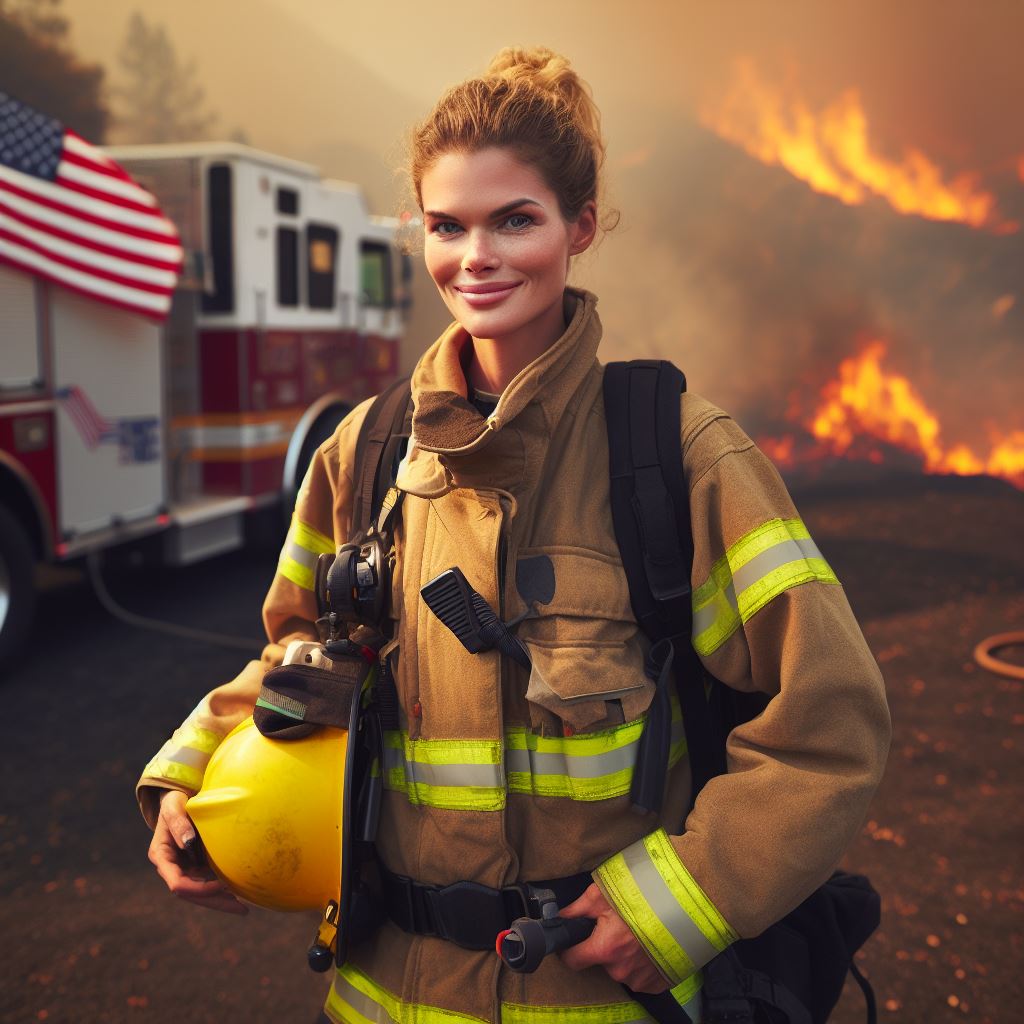
See Related Content: Pros and Cons: Being a Security Guard in the United States
Afternoon Work
Continuation of hotshots’ responsibilities in the afternoon
Afternoons are just as busy for hotshots as mornings, as their responsibilities continue throughout the day.
One crucial aspect of their work is the ability to rotate roles and tasks based on the progression of the fire.
This flexibility allows hotshots to adapt to changing conditions and allocate resources efficiently.
As the fire spreads, some hotshots may be assigned to direct attack, where they actively engage in extinguishing flames.
How they can rotate roles and tasks depending on the fire’s progression
Others may be tasked with constructing firelines, which involve creating barriers to prevent the fire’s spread.
This rotation ensures that each member of the hotshot crew remains engaged and actively contributes to the containment efforts.
The ongoing assessment of fire behavior and containment efforts
Meanwhile, the ongoing assessment of fire behavior is critical to develop effective strategies.
Hotshots closely monitor the fire’s movement, taking note of wind patterns, fuel availability, and terrain conditions.
This information is constantly relayed to incident commanders, allowing for informed decisions and resource allocation.
Transform Your Career Today
Unlock a personalized career strategy that drives real results. Get tailored advice and a roadmap designed just for you.
Start NowHotshots also pay close attention to fire behavior indicators, such as the rate of spread, intensity, and path. These observations help them predict the fire’s potential movement and adapt their tactics accordingly.
Additionally, hotshots continuously evaluate the effectiveness of containment efforts. They assess the success of firelines, ensuring they remain intact and adequately contain the fire.
Any breaches or weak spots are immediately addressed to prevent the fire from escaping the designated area.
Hotshots may also deploy specialized equipment like bulldozers or helicopters to reinforce containment lines. Regular communication is vital during these assessments and ongoing operations.
Hotshots use radios to stay in constant contact with their crew members and incident commanders.They share important updates, coordinate their movements, and request additional support as needed.
This seamless flow of communication ensures a cohesive and efficient approach to firefighting.
As the afternoon progresses, hotshots are fueled by their passion and commitment to protect lives, property, and natural resources.
Their relentless determination and teamwork drive their efforts, even when faced with challenging situations.
No matter the time of day, hotshots remain dedicated to their mission on the wildfire frontlines.
Read: The Training Rigor: Preparing for Combat & Peacekeeping
End of Day
- Winding Down: After a long firefighting shift, the process of winding down begins.
- Debriefing Sessions: Hotshots participate in debriefing sessions to discuss the day’s events and lessons learned.
- Equipment Maintenance: Hotshots take time to clean and maintain their equipment to ensure it is ready for the next shift.
- Mental Exhaustion: Hotshots experience mental exhaustion from the intense focus and decision-making required during a fire.
- Physical Exhaustion: The physical demands of firefighting leave hotshots physically drained and sore at the end of the day.
- Relief: There is a sense of relief and accomplishment after successfully completing a long firefighting shift.
- Comradery: Hotshots rely on each other for support and build strong bonds as they face challenges together.
- Reflection: Hotshots reflect on the day’s events and the impact they made in protecting communities and landscapes.
- Recovery: Hotshots focus on rest and recovery to prepare for the next day’s firefighting challenges.
- Appreciation: Hotshots appreciate the beauty and power of nature, even in the face of destruction.
- Continued Vigilance: Hotshots remain vigilant even during downtime, always ready to respond to any new fire emergencies.
Explore Further: Key Skills and Training for Aspiring US Detectives
Conclusion
The challenging and demanding nature of a hotshot’s work on wildfire frontlines cannot be understated.
fearless professionals put their lives on the line every day to protect lives, property, and natural resources.
Hotshot crews play a critical role in safeguarding communities from the devastating effects of wildfires. Their invaluable contributions cannot be overlooked.
They brave the dangerous and unpredictable conditions to contain and extinguish fires, often working long hours in exhausting environments.
It is important for us to appreciate and support these brave professionals. They sacrifice their own comfort and safety to ensure the safety and well-being of others.
Their dedication and commitment deserve our utmost admiration.
Next time you see a hotshot crew battling a wildfire, take a moment to acknowledge the heroic work they do.
Recognize the physical and mental toll it takes on them and the immense pressure they face. Show your gratitude, not only through words but also through actions.
Support organizations that provide assistance to hotshot crews and their families. Advocate for policies and measures that prioritize their safety and well-being.
By coming together as a community, we can ensure that hotshots have the resources they need to continue their vital work.
In the face of the ever-increasing threat of wildfires, hotshot crews are the unsung heroes who stand between destruction and safety.
Let us not forget the sacrifices they make and the difference they make in preserving our lives, our homes, and our natural environment.
[E-Books for Sale]
The Big Book of 500 High-Paying Jobs in America: Unlock Your Earning Potential
$19.99 • 500 High-Paying Jobs • 330 pages
Explore 500 high-paying jobs in America and learn how to boost your career, earn more, and achieve success!
See All 500 High-Paying Jobs of this E-Book
1001 Professions Without a Degree: High-Paying American Jobs You Can Start Now
$19.99 • 1001 Professions Without a Degree • 174 pages
Discover 1001 high-paying jobs without a degree! Unlock career tips, skills, and success strategies for just $19.99!

